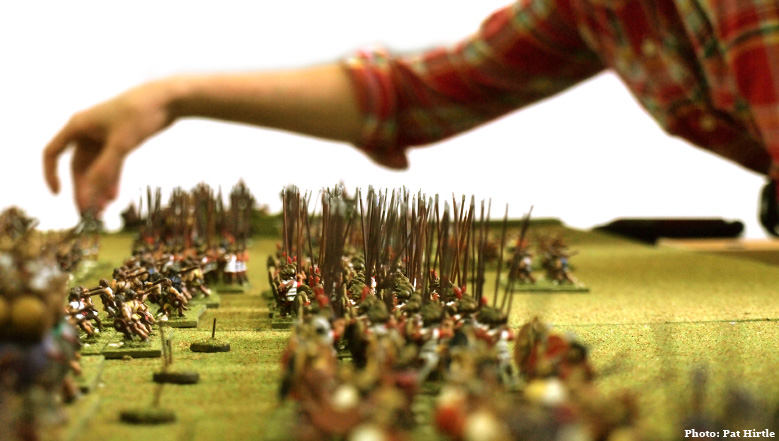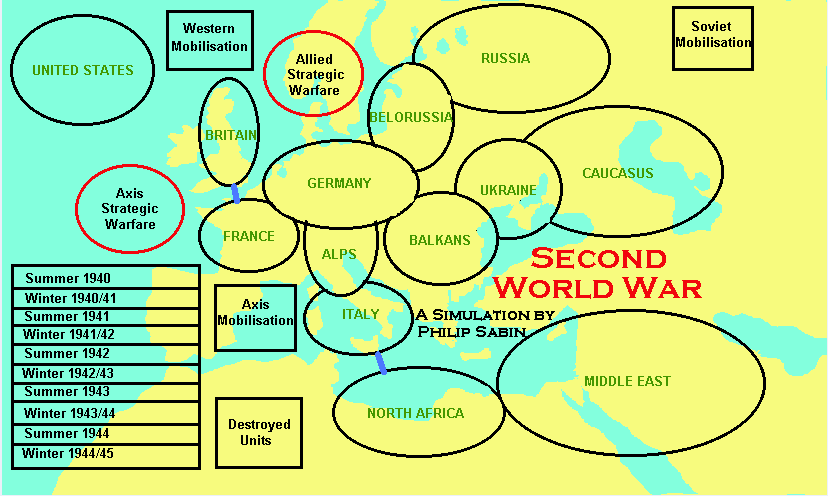Preamble
Over the last couple of months, Kevin over at the Zhodani Commando blog and I have had a game of MMP's Ukraine '44 on the go. We played using the VASSAL engine and the Ukraine '44 module (which Kevin performed a bit of magic on to make more user-friendly), taking turns recording our respective moves in a VASSAL logfile and then sending them to the other fellow to roll dice, take casualties, etc. It's a brilliant way to play over distance, and the way the turns are broken up means that you don't need too large a chunk of time to do your moves. The most time-consuming thing is working out how you want to approach the board situation.
The game is based on Hube's pocket, in which the surrounded German 1st Panzer Army managed to break out of the encirclement and rejoin their comrades. I deliberately didn't read up on the historical action because I wanted to work out things for myself, so apologies for going light on that aspect!
One interesting thing about the game is that all unit strengths are hidden and strength is only revealed during combat. Consequently, there is a fair bit of guesswork going on early in the game as one gets a feel for where the enemy has concentrated his strength.
The objective for the German player is to break out of the pocket or, failing that, to prevent the Soviets from taking three victory cities while also destroying more Soviet strength points than he loses himself.
The Germans have a number of advantages, including that they get better movement rates than the Soviets, and that their mechanised units get to move again after combat, allowing these to attack from an exposed position and then retreat back to the relative safety of the main lines. They also have force multipliers in the form of two units of tiger tanks which can be attached to any armoured unit and give a very useful 1-3 modifier to the combat die roll on both attack and defence. The Germans also have 'combat superiority', meaning that should they convincingly destroy an enemy formation in any attack, the German force involved is able to ignore the combat attrition that it would normally have suffered.
The Soviets can win by preventing a breakout and by killing off German strength points, with any German strength points out of supply at the end of the game also counting as eliminated. The Russian player can also claim an auto victory if at any time he controls three of the game's four victory cities.
In their favour the Soviets have three things: the number of units, the strength of their tank divisions, and the +2 artillery combat modifier that applies if they elect to do their attacks before they do any movement. But most of the Soviet infantry units are relatively weak in defence, and are therefore susceptible to being monstered by determined German attacks, provided that the German attacks the right units (which, given hidden unit strengths, is not always certain!).
Each side must therefore play quite differently.
Anyway, I took the Germans, Kevin took the Soviets, and we were at it.
The action
This is how things started off after Kevin's first move.
 |
| Opening moves (note that my units' strengths can be seen because the module is showing the game from my perspective) |
You can see that Soviet armour (red units) has already seized the key road junctions between the German forces and safety to the west.
Over the next few turns Kevin attempted to complete the encirclement, squeeze the Germans back towards the river, and reduce the German garrison in the victory city of Ternopol in the North.
 |
| Turn 3 |
The Germans tried to kill as many front-line Soviet units as possible, first by giving the armoured units a bloody nose and then, once they were cautious and wary, by directing attacks against the weaker infantry units. Meanwhile, the Soviets attacked a second victory city in the north and threatened a third in the south.
 |
| Turn 5 |
It was only now that I saw Kevin's plan - suck up losses elsewhere, and aim to take the victory cities for the auto win. I did not have enough troops to do much about this; I had not seriously considered this strategy on his part. The cunning blighter had me!
 |
| Turn 6 |
By now the troops in the pocket were relying on supply from the air and were operating at reduced effectiveness. When combined with the advance against my victory cities, the situation looked hopeless. I was ready to call the game at this point, but Kevin encouraged me to continue, and he was right - I had misread the reinforcement entry hexes, and with a bit of luck a counterattack was launched using said reinforcements, keeping the Soviet advance units isolated and out of supply and enabling the recapture of the second of the northern victory cities
 |
| Turn 7 |
 |
| Victory! |
But it was not to be. Although almost at the limits of their strength in the north the Soviets retook Berezheny, and with Chernovtzy in the south falling in the same turn, Kevin had the three victory cities he needed to triumph. A mighty success - well done sir!
Conclusion.
The game was, for me, a lot of fun, even though I badly misread Soviet intentions. From the German player's perspective, the actions needed to try to weaken the encircling cordon were great fun to play out, but I don't think Kevin enjoyed the Soviet infantry units being so weak! Nevertheless, despite the desperate efforts of 1st Panzer Army, clever planning and nerves of Red Steel saw Kevin through to his thoroughly deserved win.
I would certainly play this again, but my German strategy needs a bit more work, I think!
Aside from being a strong player, Kevin was an excellent sport and a lot of fun to play against. VASSAL is a great tool, and if any readers like boardgames but lack for local players, I would encourage you to look into it.
























